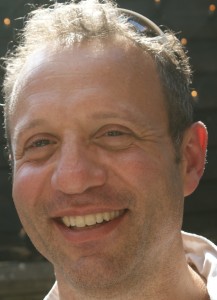Hau’oli Makahiki Hou! — That’s Happy New Year in Hawaiian! I hope everyone had a wonderful holiday — and
“Nutcracker” season — and are ready to start the New Year. This month’s post is a brief one to help you with your stretching. New research (on dancers) shows that the intensity of your stretching doesn’t have to be extreme in order to increase your flexibility.
The post is written by Matthew Wyon, PhD, who has written for our Dance Wellness column before — Matt is currently serving as the Vice President of IADMS (International Association for Dance Medicine and Science), and is also a professor / researcher at the University of Wolverhampton (UK), as well as being affiliated with England’s National Institute for Dance Medicine and Science.
So — enjoy the post, and have a good start to your New Year of dancing longer, stronger, and safer!
– Jan Dunn, MS, Dance Wellness Editor

by Matt Wyon, PhD
Dancers are renowned for their flexibility or range of movement, and devote a lot of time maintaining and enhancing this attribute. There has been much written on the different stretch techniques such as static, dynamic and proprioceptive neuromuscular facilitation (PNF) and when they should be implemented — for example, dynamic stretching during warm-up and static during recovery. However, the intensity at which the stretch should be held has had little research until recently. We often feel that unless the stretch is just below the pain barrier, the point where the muscle starts to wobble, nothing will change; this often equates to “8 out of 10” intensity.
A series of recent studies has started to challenge this concept. The first showed that at 8/10 intensity there was a huge increase in inflammation blood markers, suggesting that the muscle being stretched was actually being traumatized — but at lower intensities (3-6/10) this effect wasn’t noticed.
But will this lower intensity help increase flexibility?
A six week experiment on dancers who were split into one group that stretched at their usual intensity (8/10), and another at the lower intensity (3-5/10), noted that the dancers in the lower intensity group increased their grande battement and developpé height. The second group (8/10 intensity) saw a very slight but not significant increase (5-degree) compared to 20-degree for the low-intensity group.
So it seems less is more when it comes to stretching intensity!
It must be emphasized that this intensity should be used at the end of the day as a recovery and improving range of movement technique, rather than during warm-up.

Contributor Matthew Wyon, PhD, is a Professor in Dance Science at the University of Wolverhampton, UK and a Visiting Professor at the ArtEZ, Institute of the Arts, The Netherlands.
At Wolverhampton he is the course leader for the MSc in Dance Science and Director of Studies for a number of dance science and medicine doctoral candidates. He is a founding partner of the National Institute of Dance Medicine and Science, UK.
Prof. Wyon is Vice President of the International Association for Dance Medicine & Science and a past chair of the Research Committee. He has worked with numerous dancers and companies within the UK and Europe as an applied physiologist and strength and conditioning coach.
He has published over 80 peer-reviewed articles in dance medicine and science.





[…] “The power during that a widen should be hold has had small investigate until recently,” he writes in a blog post entitled ‘Dancers and stretching: How tough should we push?’ on… […]